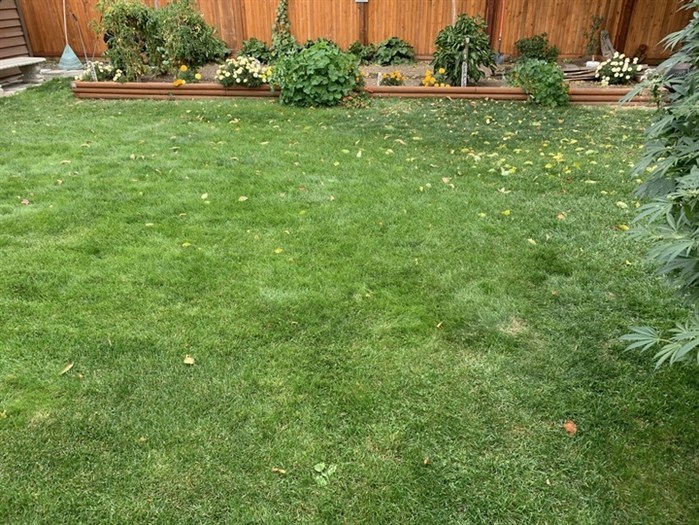How to tuck in your lawn and garden for the winter in Kamloops, Okanagan

The frost is almost on the pumpkins in the Okanagan and Kamloops and that means many residents are putting their gardens, lawns and fruit trees to bed for the winter.
There are several ways to improve and protect lawns and gardens to provide the best condition for the following spring.
Danielle Greenstreet is a certified horticulturist who is busy helping Kamloops residents winterize their yards through her gardening business.
READ MORE: Risk of frost this week in Kamloops, Okanagan
“The first thing you do in your garden is pull out any annuals that are dead and throw them in the compost,” Greenstreet said. “Then you remove dead heads and give your garden a weeding to prevent further spread of weeds. You can add manure or bone meal to replenish the soil with nutrients.”
Greenstreet said for vegetable gardens it is important to remove anything that could cause mold. Covering gardens with a layer of mulch can insulate perennial roots and protects soils from the harsh winter elements. Lawns require protection as well.
“It is good to leave a thin layer of leaves on the lawn,” Greenstreet said. “It helps keep the good organisms in your yard. You have a whole little universe in your yard. Leaf litter is used as a pupation site for moths and caterpillars and millipedes and spiders use leaf litter for shelter.”
Greenstreet said autumn is a good time to aerate your lawn and reseed any dead patches.
“Cover seeded areas with soil and water,” she said. “Fall is also a good time to fertilize your lawn with lime and nitrogen. You can usually find a mixed bag of fertilizer at any garden store.”
READ MORE: Kamloops community gardens are targets of vandalism, theft, litter
Extra leaves can go into the compost pile, which will need to be rotated regularly to break down during colder temperatures.
“When the weather gets cold I do a lot of pruning,” she said. “I remove anything dead, diseased or damaged from trees and shrubs. It is best to prune trees in the winter when the tree is dormant and the leaves are gone so you can see the shape of it better.”
It's good practice to cover delicate plants and ornamentals with burlap to keep them protected and insulated during the winter, she said.
Greenstreet recommends watering lawns until the ground is frozen and keeping garden soils damp.
To contact a reporter for this story, email Shannon Ainslie or call 250-819-6089 or email the editor. You can also submit photos, videos or news tips to the newsroom and be entered to win a monthly prize draw.
We welcome your comments and opinions on our stories but play nice. We won't censor or delete comments unless they contain off-topic statements or links, unnecessary vulgarity, false facts, spam or obviously fake profiles. If you have any concerns about what you see in comments, email the editor in the link above.







